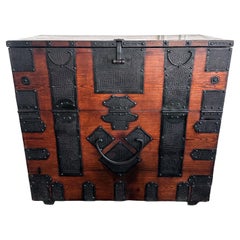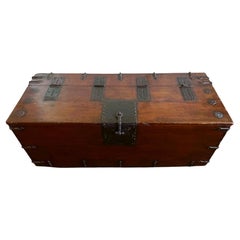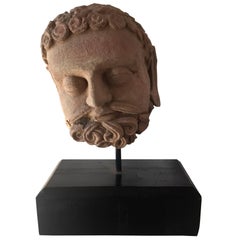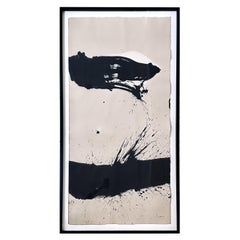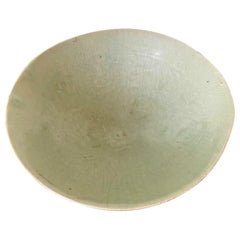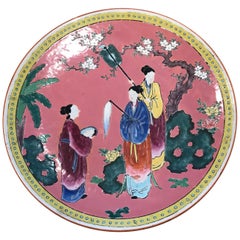Atlanta - Asian Art and Furniture
Late 19th Century Korean Other Antique Atlanta - Asian Art and Furniture
Metal
Early 19th Century Korean Other Antique Atlanta - Asian Art and Furniture
Iron
15th Century and Earlier Indian Other Antique Atlanta - Asian Art and Furniture
Terracotta, Wood
Early 2000s German Post-Modern Atlanta - Asian Art and Furniture
Paper
15th Century and Earlier Korean Archaistic Antique Atlanta - Asian Art and Furniture
Ceramic
Early 20th Century Japanese Japonisme Atlanta - Asian Art and Furniture
Ceramic
Mid-19th Century Korean Other Antique Atlanta - Asian Art and Furniture
Mother-of-Pearl, Wood, Lacquer
Early 1900s Korean Other Antique Atlanta - Asian Art and Furniture
Wood
Late 19th Century Japanese Japonisme Antique Atlanta - Asian Art and Furniture
Silk, Wood
Early 19th Century Chinese Chinese Export Antique Atlanta - Asian Art and Furniture
Giltwood, Lacquer
20th Century American Chinoiserie Atlanta - Asian Art and Furniture
Stone
15th Century and Earlier Chinese Han Antique Atlanta - Asian Art and Furniture
Terracotta
Late 19th Century Japanese Meiji Antique Atlanta - Asian Art and Furniture
Silk, Wood
18th Century Japanese Meiji Antique Atlanta - Asian Art and Furniture
Ceramic
1880s Japanese Meiji Antique Atlanta - Asian Art and Furniture
Ceramic
19th Century Japanese Japonisme Antique Atlanta - Asian Art and Furniture
Wood, Lacquer
Early 20th Century Japanese Meiji Atlanta - Asian Art and Furniture
Silk
18th Century Japanese Edo Antique Atlanta - Asian Art and Furniture
Mother-of-Pearl, Lacquer
19th Century Tibetan Tibetan Antique Atlanta - Asian Art and Furniture
Textile, Acrylic
1960s American Chinoiserie Vintage Atlanta - Asian Art and Furniture
Wood
Early 2000s Korean Modern Atlanta - Asian Art and Furniture
Ceramic
19th Century Chinese Qing Antique Atlanta - Asian Art and Furniture
Stone
15th Century and Earlier Korean Archaistic Antique Atlanta - Asian Art and Furniture
Ceramic
Early 20th Century Japanese Japonisme Atlanta - Asian Art and Furniture
Brocade, Silk, Acrylic
20th Century Japanese Meiji Atlanta - Asian Art and Furniture
Brocade, Silk
Late 19th Century Korean Other Antique Atlanta - Asian Art and Furniture
Porcelain
Mid-19th Century Korean Other Antique Atlanta - Asian Art and Furniture
Elm
18th Century Korean Other Antique Atlanta - Asian Art and Furniture
Ceramic
19th Century Chinese Chinese Export Antique Atlanta - Asian Art and Furniture
Linen, Silk, Wood
15th Century and Earlier Korean Other Antique Atlanta - Asian Art and Furniture
Ceramic
18th Century Japanese Edo Antique Atlanta - Asian Art and Furniture
Ceramic
Late 19th Century Other Antique Atlanta - Asian Art and Furniture
Porcelain
19th Century Japanese Japonisme Antique Atlanta - Asian Art and Furniture
Wood, Lacquer
19th Century Korean Other Antique Atlanta - Asian Art and Furniture
Wood, Lacquer
Late 19th Century Korean Other Antique Atlanta - Asian Art and Furniture
Brass
16th Century Korean Archaistic Antique Atlanta - Asian Art and Furniture
Ceramic
19th Century Chinese Qing Antique Atlanta - Asian Art and Furniture
Stone
19th Century Japanese Japonisme Antique Atlanta - Asian Art and Furniture
Wood, Lacquer
15th Century and Earlier Korean Archaistic Antique Atlanta - Asian Art and Furniture
Ceramic
Early 20th Century Burmese Archaistic Atlanta - Asian Art and Furniture
Wood, Lacquer
Late 19th Century Chinese Chinese Export Antique Atlanta - Asian Art and Furniture
Stone
Early 20th Century Japanese Showa Atlanta - Asian Art and Furniture
Silk
Early 20th Century Korean Other Atlanta - Asian Art and Furniture
Wood
19th Century Chinese Chinese Export Antique Atlanta - Asian Art and Furniture
Silk, Wood
19th Century Japanese Japonisme Antique Atlanta - Asian Art and Furniture
Lacquer
19th Century Korean Other Antique Atlanta - Asian Art and Furniture
Fabric, Silk, Wood
19th Century Chinese Chinese Export Antique Atlanta - Asian Art and Furniture
Silk
1890s Japanese Meiji Antique Atlanta - Asian Art and Furniture
Ceramic
1880s Korean Other Antique Atlanta - Asian Art and Furniture
Silk, Acrylic, Wood
1960s American Chinoiserie Vintage Atlanta - Asian Art and Furniture
Metal, Brass
19th Century Chinese Chinese Export Antique Atlanta - Asian Art and Furniture
Silk, Giltwood
1950s Japanese Chinoiserie Vintage Atlanta - Asian Art and Furniture
Metal
Late 19th Century Japanese Meiji Antique Atlanta - Asian Art and Furniture
Ceramic
17th Century Japanese Japonisme Antique Atlanta - Asian Art and Furniture
Brass
Mid-20th Century Japanese Modern Atlanta - Asian Art and Furniture
Ceramic
19th Century Korean Other Antique Atlanta - Asian Art and Furniture
Iron
1890s Japanese Meiji Antique Atlanta - Asian Art and Furniture
Ceramic
Early 20th Century Chinese Chinese Export Atlanta - Asian Art and Furniture
Stone
19th Century Korean Other Antique Atlanta - Asian Art and Furniture
Brass
1930s Japanese Japonisme Vintage Atlanta - Asian Art and Furniture
Paper
Read More
Symbols of Happiness and Rebirth Adorn This Japanese Satsuma Bowl
Decorated with white cranes and the sought-after thousand-butterflies motif, the Meiji-period vessel offers both a celebration of traditional aesthetics and a clear reflection of the era’s appetite for exquisite export pieces.
Chicago’s Pagoda Red Has a Spirited Mix of Asian Antiques and Bold New Art
For 25 years, gallerist Betsy Nathan has leveraged her keen eye and key connections to bring a unique selection of rare finds to the market.
In L.A., Gallerist JF Chen Has Long Championed Eclectic Blue-Chip Design
Now working alongside his daughter Bianca, dealer Joel Chen has presented a most covetable array of antiques, art and contemporary creations for more than 40 years.
12 Calming Spaces Inspired by Japanese Design
From cherry-blossom-adorned walls paired with glamorous lighting to wood-paneled ceilings above checkerboard-patterned chairs, these 12 spaces seamlessly blend Eastern and Western aesthetics.
Rodrigo Rivero Lake’s Mexico City Showroom Is a Museum-Worthy Trove of Spanish Colonial and Asian Antiques
The dealer and curator has spent the past 50 years amassing a collection of exceptional art, furniture and architectural elements that trace the cultural influence of the Spanish empire from Europe to the Americas and beyond.
16 Refined Asian-Inspired Interiors
These spaces exemplify how Eastern elements elevate a home's decor.
